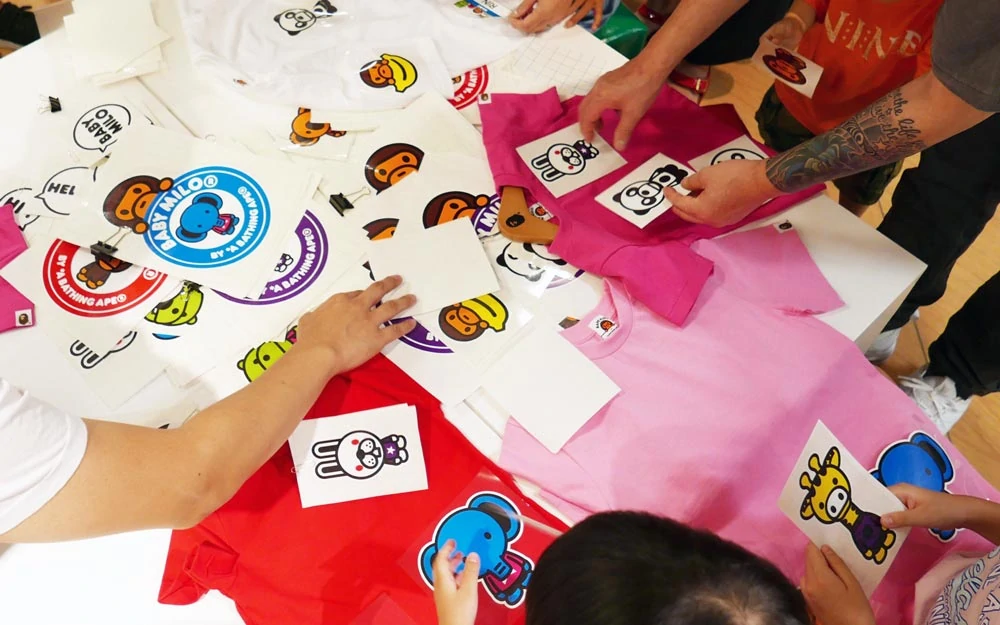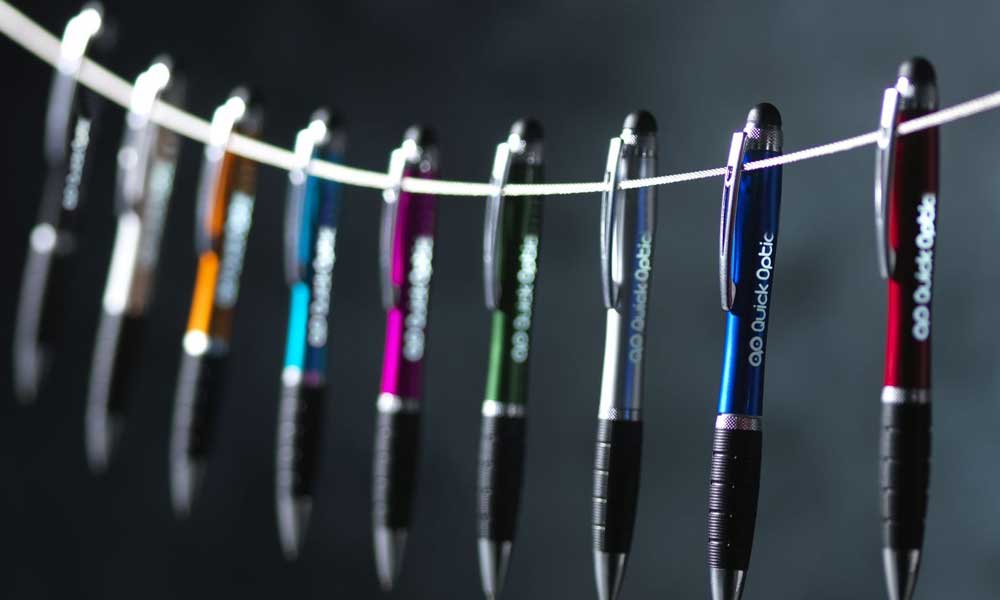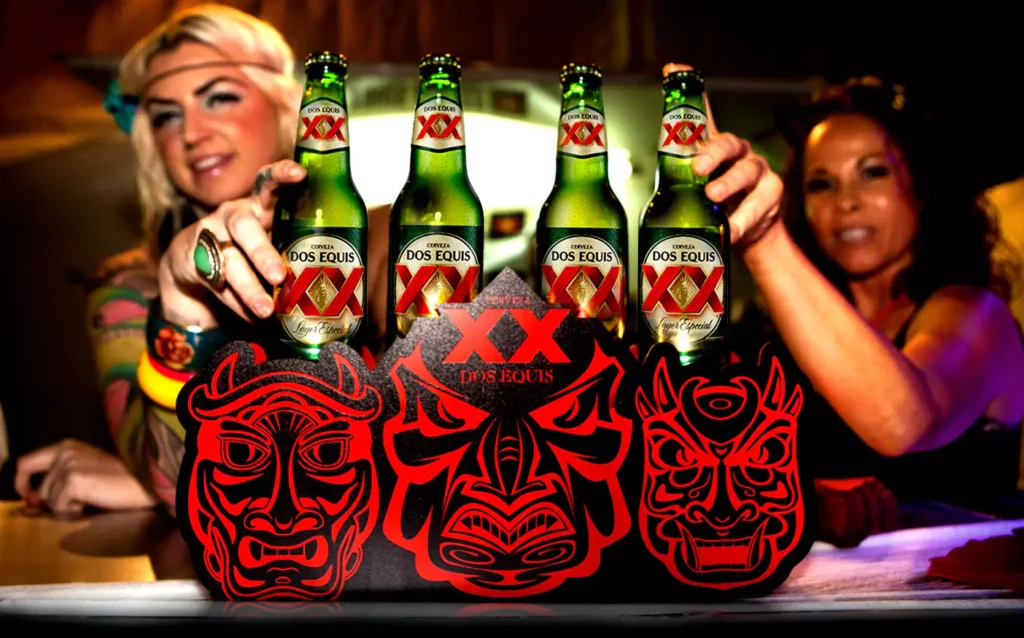Promotional Products: An Essential Marketing Tool
Promotional products—sometimes called “swag,” “promos,” or “giveaways”—are branded objects given out by companies to promote their business, products, or services. Promotional items are highly visible and valuable brand advertising, from t-shirts and water bottles to pens and flash drives. With careful selection and distribution, they can increase brand awareness and loyalty among target audiences. This article will explore promotional products and their effective use in marketing campaigns.
Table of Contents
A Closer Look at Promotional Products

Promotional products come in almost any form imaginable—from everyday items like t-shirts, caps, and pens to more unique giveaways like fidget spinners, selfie sticks, and branded snacks. The most popular categories of promotional items include:
- Apparel: T-shirts, polo shirts, hats, jackets, etc. – anything wearable.
- Drinkware: Water bottles, travel mugs, koozies, tumblers, etc. Popular due to frequent daily use and visibility.
- Office supplies: Pens, sticky notes, notepads, highlighters, mouse pads, etc. Useful and visible in office environments.
- Bags: Tote bags, drawstring backpacks, laptop sleeves, lanyards, etc. It is great for holding other promotional items, too.
- Tech & electronics: USB drives, earbuds, power banks, phone accessories, etc. Very popular gadget giveaways.
- Outdoors & recreation: Folding chairs, blankets, sunglasses, beach balls, frisbees, etc. Fun for summertime events.
- Food & snacks: Chocolate, mints, chips, cookies, candy, beef jerky—great as tasty treats featuring the brand logo/message.
- Health & beauty: Hand sanitiser, lip balm, sunscreen, fitness trackers—ideal for campaigns focused on wellness.
Brands often match the promotional product to the nature of their business, but anything can be branded and given away. The key is connecting the item to the intended audience and campaign purpose.
Benefits of Promotional Products
There are many excellent reasons to utilise promotional giveaways as part of a company's marketing strategy:
1 – Cost-Effectiveness
Compared to other forms of marketing/advertising, promotional products provide an exceptionally high return on investment (ROI). One study found the average cost-per-impression for promotional items to be $0.005-$0.01—far lower than most other media types. And with the right product and distribution plan, ROI easily exceeds 2000%. They offer outstanding “bang for your buck.”
2 – Long Exposure & Visibility
Promotional giveaways enjoy long life cycles and maximum visibility in users' daily lives if selected well. For example, branded apparel may be worn multiple times a week, while drinkware could be used daily at home and on the go. This repetition and visibility lead to ongoing subconscious impressions that strengthen brand familiarity.
3 – Targeted Reach
With a custom promotional product giveaway, companies can easily target specific demographics, interests, geographical areas, events, etc. For example, tech brands can distribute phone chargers at virtual conferences for their ideal buyers. Strategic product selection and distribution enable spot-on audience targeting.
4 – Recipient Appreciation & Utility
By nature, promotional items provide value/utility for the recipients—whether practical things like bags/drinkware or fun freebies like snacks/toys. People appreciate receiving free, valuable products…and this positive sentiment reflects well on the branding/messaging of the product, too. Useful giveaways foster goodwill.
5 – Brand Interaction
Unlike static advertising, promotional items facilitate ongoing interaction between the brand/product and the audience. Fidgeting with a branded pen, sipping from a logoed tumbler, snacking on imprinted mints—these physical items prompt regular small-scale engagements full of impression/conversion potential.
In summary, providing strong ROI, visibility, precise targeting, audience goodwill, consistent interaction, and promotional giveaways deliver phenomenal marketing results cost-effectively.
Maximising Promotional Product Effectiveness

Brands must align promotional items to campaign goals and audiences to achieve the full benefits. With a strategy, giveaways become generic SWAG with limited impact. Tactics to optimise effectiveness include:
Select Products Strategically
- Match products to campaign purpose, brand identity, and intended recipients
- Consider practicality, visibility, and shelf life when selecting products
- Research trends to identify on-trend or “buzzy” products sparking interest
Design/Brand Products Thoughtfully
- Imprint clear branding, including logos, slogans, imagery, URLs, etc.
- Keep designs simple enough for small imprint areas
- Use colour schemes matching broader brand identity
- Add creativity/personality with packaging, theming, variances
Identify & Target Key Audiences
- Determine demographic/interest attributes of ideal recipients.
- Identify events/venues enabling distribution access to these groups
- Capture data (emails, etc.) during giveaways for future nurturing
- Consider giveaway mechanics fostering viral sharing to extend the reach
Distribute Items Strategically
- Give away products at conferences, company events, and sponsored spaces targeting key groups.
- Equip sales teams to gift products to prospects/clients/partners
- Ship free product samples tied to downloads, content offers, surveys, etc.
- Ensure sufficient supply for impact without excessive waste.
Brands maximise promotional product effectiveness with thoughtful selection, design, targeting, and distribution strategies.
Top Promotional Items Throughout History

Promotional giveaways tie closely to cultural trends. As consumer preferences and hot items come and go, brands adapt products to capture attention. Examining historically impactful examples reveals shifting trends:
Early 1900s: Almanacs, calendars, fans, chalkware
1920s: Cigar cutters, matchbooks
1930s: Playing cards, paperweights
1940s: Plastic combs, nail files, badges
1950s: Frisbees, hula hoops, yo-yos
1960s: Pet rocks, mood rings, iron-on
1970s: Tote bags, custom mugs, bumper stickers
1980s: Slap bracelets, rolled towels, boomboxes
1990s: Beanie babies, water bottles, earbuds
2000s: USB flash drives, wine openers, selfie sticks
2010s: Fidget spinners, pop sockets, wireless chargers
Today, smart speakers, phone wallets, and reusable straws rank among the hottest and most brandable items. Tracking trends allows marketers to harness hot commodities as sought-after promotional giveaways.
Regulations & Best Practices
While offering wide creative latitude, promotional marketing remains subject to regulations like any industry. Brands should adhere to laws and ethical standards, including:
Federal Trade Commission (FTC) Guidelines: Requires disclosure when giving free products tied to reviews/endorsements to avoid deceptive practices.
U.S. Customs Restrictions: Strict regulations govern manufacturing and importing promotional items from overseas. Requires special paperwork and procedures.
CAN-SPAM Act: Governs proper procedures for emails related to promotions, including clear opt-out policies.
Ethical Production Standards: Consumers demand fair labour practices without human/environmental exploitation in manufacturing processes.
Targeted Outreach: Manual opt-in consent should precede any individualised promotional outreach efforts—no spamming specific contacts.
Overall, the promotional industry remains self-regulated mainly, with some federal rules overlayed relating to advertising practices, imports/production, and unsolicited communications. Brands should ensure full legal and ethical compliance.
Promotional Products Industry Snapshot
- Total annual industry expenditures on promotional products and services in the United States as of 2022: $24.7 billion
- Estimated number of promotional products businesses in the United States as of 2022: 26,150
- Typical profit margins on promotional products: 20-40%
- The most common amount spent per promotional product is $1-$5 per unit
- Estimated number of promotional products manufactured annually: 30 billion units
While encompassing over 26,000 companies, the promotional industry remains dominated by large distributors like VistaPrint, 4imprint, and Staples Promotional Products, along with manufacturers like SanMar, BIC, and HALO Branded Solutions—most focus sales on small and midsize businesses.
Notable & Creative Promotional Campaigns

Innovative branding and creative distribution have generated buzz for many promotional giveaways over the years:
- Will It Blend? Videos: Blendtec blenders sent hundreds of noisy blenders to influencers/press, prompting viral videos of insane objects blended to powder.
- Dos Equis Masquerade Contest: People submitted secret identities on branded masks for a chance to attend an extravagant masked ball party. The intrigue and exclusivity made this concept go viral.
- Skittles Replace NFL Logo: During the 2021 Super Bowl, Skittles swapped the NFL logo on referee hats with their rainbow Skittles logo as part of a humorous campaign playing on the broadcaster's refusal to say “Super Bowl.”
- Elmer's Bottle of Awesome: Playing on their “Amazing What You Can Do with Elmer's” slogan, Elmer's Glue distributed promotional bottles filled with fantastic ideas for DIY craft/art projects, sparking ideation and creativity.
These outside-the-box examples generated hype by tying promotional item distribution to shareable content, contests/experiences, partnerships, and more.
Promotional Distribution Channels & Services
Many third-party distributors, marketplaces, and service providers exist to support businesses promotional product needs:
- Distributors: Large companies like VistaPrint, 4Imprint, and ePromos sell 1000s of products, handle logistics, offer branding services, provide marketing analytics, maintain designer marketplaces, and can even run full promotional campaigns on a business's behalf. They make launching promotions easy.
- A La Carte Manufacturers: Businesses can order specific items customised and dropshipped on-demand from manufacturers specialising in categories like apparel (SanMar, Bodek & Rhodes), drinkware (Tervis), office products (Pennline, WeMakeIt), tech gadgets (Ace Technology), and bags (High Sierra). Picking manufacturers item-by-item allows high levels of specificity but fewer turnkey services compared to distributors.
- Multi-Seller Marketplaces: Platforms like Zazzle, CafePress, and CustomInk allow buyers to receive quotes, compare options, and place consolidated orders across items and print vendors. However, quality and reliability vary more widely on these platforms.
- Promotional Product Associations: Groups like the Advertising Specialty Institute (ASI), the Promotional Products Association International (PPAI), and regional associations offer member directories, annual conferences/trade shows, professional development, industry resources, awards programs, and unified representation advancing shared business interests across the promotional items sector.
Businesses enjoy robust infrastructure supporting effective promotional product campaigns between distributors, manufacturers, marketplaces, and industry associations.
Promotional Products Trends to Watch

Several emerging trends stand positioned to shape the future of promotional giveaways:
Sustainability
Eco-friendly production using natural, recycled, and reusable materials strongly ties to specific demographics' brand values. Items like bamboo tumblers, recycled bags/hats, reusable straws, and biodegradable event supplies reflect corporate social responsibility around waste and climate change issues.
Personalisation
Variable print and on-demand production enable mass customisation, allowing each recipient to receive products tailored specifically to them. Personal touches like names, photos, location details, preferences, etc., boost perceived value, sharing potential, and campaign memorability.
Smart Tech
Internet-of-Things (IoT) devices like smartwatches, fitness trackers, programmable buttons, location trackers, wireless earbuds, and device chargers integrate digital experiences, connectivity, and practical utility into giveaways keeping brands on the cutting edge.
Virtual/Hybrid Events
Remote, virtual, and hybrid events (in-person/digital combined programs) mandate rethinking promotional campaigns from physical giveaways to more digital experiences and gift codes for items mailed on demand to registrants upon request.
Overall corporate responsibility, personalisation, advanced tech, and adapting to virtual environments are pivotal trends in optimising promotional products.
Conclusion
In conclusion, promotional giveaway products are uniquely beneficial in business marketing programs. Promotional items foster brand awareness and affinity cost-effectively by offering an outstanding return on investment, visibility, audience targeting precision, recipient appreciation, and consistent interaction. Matching products strategically to campaign goals/audiences ensures maximum effectiveness. With forecasters projecting over $26 billion in annual expenditures by 2025, promotional products will continue growing as essential marketing tools. Their versatility, creativity, and reliable performance cement promotional giveaways as vital components of any integrated marketing communications strategy.
Frequently Asked Questions
What are the most popular promotional items?
Apparel, drinkware, office supplies, bags, and tech accessories rank among today's most given-away promotional items due to their frequent use and driving visibility. T-shirts, water bottles, sticky notes, backpacks, and phone chargers tend to top category lists.
How much do promotional products cost?
Costs vary widely by quantity and type of product selected. Simple items like custom pens may cost as little as $0.50 per unit. Higher-end tech giveaways like power banks land over $20 per piece. The average cost falls around $1-$5, providing valuable branded items cost-effectively.
How long does production and shipping take?
Standard production/shipping for simple promotional products takes 1-2 weeks in the U.S. More complex multi-step imprint techniques and overseas sourcing typically add 2+ weeks. Rush production as fast as 48 hours costs premiums around 50% extra.
What information must be included in promotional giveaways?
Imprints require a business name, logo, slogan, website, or other contact element identifying brand ownership of the item. Regulatory labels like size charts for apparel also apply. Any contest or sweepstakes rules should be included as well.
What is the difference between SWAG and promotional products?
“SWAG” stands for “Stuff We All Get”, referring to free event giveaways. This term overlaps with promotional products but focuses more on mass giveaways of cheap standardised items as free perks rather than for marketing purposes. So, SWAG makes up a niche segment of promotional items that concentrates on quantity over quality.

Great read! You got a handle on the benefits. It’s helpful for those contemplating refreshes. Thanks for sharing.